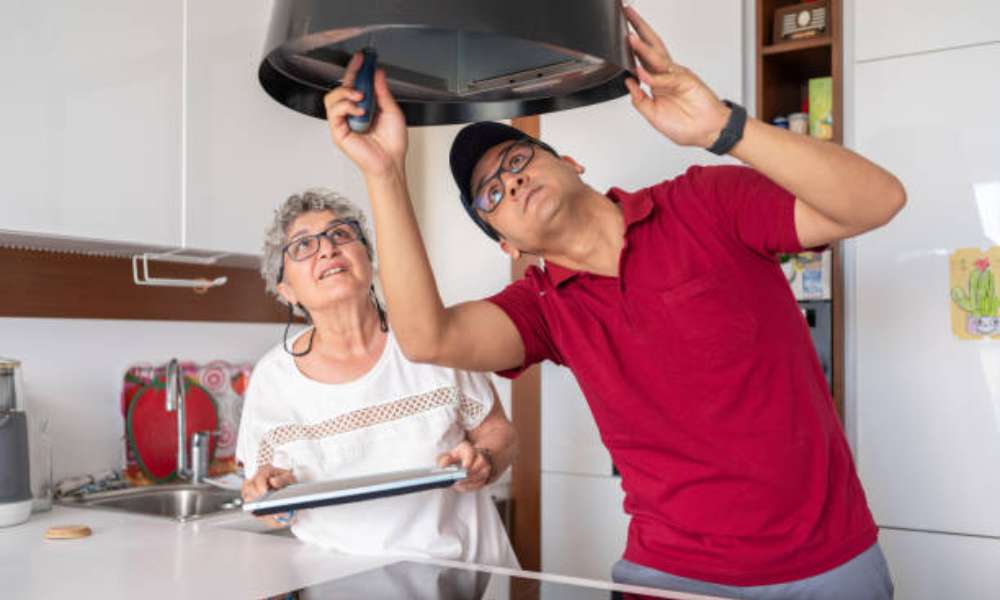Installing kitchen ventilation is a pivotal step in ensuring a healthy and comfortable environment within your culinary space. Proper ventilation not only eliminates cooking odors and smoke but also helps in reducing moisture buildup and preventing the accumulation of harmful gases such as carbon monoxide. By facilitating the circulation of fresh air, kitchen ventilation systems enhance indoor air quality and contribute to a safer cooking environment. Understanding the importance of efficient exhaust and knowing how to install it can significantly improve the functionality and safety of your kitchen. With the right guidance and tools, you can undertake this project with confidence, ensuring optimal performance and longevity of your exhaust system.
Importance Of Proper Kitchen Ventilation
Proper kitchen ventilation is essential for maintaining a healthy and comfortable environment in your home. Without adequate exhaust, cooking odors, smoke, and moisture can accumulate, leading to unpleasant smells, poor air quality, and potential health hazards. Additionally, proper exhaust helps to remove harmful gases such as carbon monoxide, which can be produced during cooking processes. By installing an effective kitchen exhaust system, you can ensure that your indoor air remains fresh and clean, creating a safer and more enjoyable cooking space for you and your family.
Types of Kitchen Ventilation Systems
Exhaust Hood Ventilation
Exhaust hood ventilation, commonly known as range hoods, is a popular choice for many kitchens. These systems are installed above the cooking surface and use fans to draw in air, capturing grease, smoke, and odors, and expelling them outside through ductwork.
Ductless Range Hoods
Ductless range hoods are ideal for kitchens where installing ductwork is not feasible. Instead of venting air outside, these systems use filters to trap grease and odors before recirculating clean air back into the kitchen.
Downdraft Ventilation
Downdraft ventilation systems are integrated into the cooking surface, either behind or alongside the cooktop. They work by drawing cooking byproducts downward through a vent, either to an exterior duct or through a filtration system.
Assessing Ventilation Needs
Assessing ventilation needs is the first step in installing a kitchen exhaust system. Consider factors such as the size of your kitchen, the type of cooking activities you engage in, and the layout of your home. Determine whether a ducted or ductless exhaust system is more suitable for your needs. Ducted systems exhaust air outside the home, while ductless systems filter air before recirculating it back into the kitchen. Assessing your exhaust needs allows you to choose the most appropriate system for optimal performance.
Selecting Ventilation Equipment
Selecting the right ventilation equipment is crucial for ensuring effective air circulation and filtration. Choose a range hood or ventilation fan that is appropriately sized for your kitchen and cooking appliances. Consider factors such as airflow capacity, noise level, and energy efficiency when selecting exhaust equipment. Look for products that are certified by reputable organizations such as the Home Ventilating Institute (HVI) to ensure quality and reliability. By selecting the right exhaust equipment, you can maximize the effectiveness of your exhaust system and improve indoor air quality.
Preparing The Installation Area
Preparing the installation area is essential for ensuring a smooth and successful installation process. Clear the area around the installation site and remove any obstacles or obstructions. Ensure that there is adequate space for mounting the exhaust equipment and running ductwork if necessary. If installing a ducted exhaust system, determine the most efficient route for the ductwork and make any necessary preparations, such as cutting holes in walls or ceilings. By properly preparing the installation area, you can streamline the installation process and minimize the risk of complications or delays.
Installing The Ventilation System
Installing the ventilation system is the next crucial step after assessing needs and selecting equipment. Follow manufacturer instructions carefully, ensuring proper placement and secure installation of the range hood or exhaust fan. If installing a ducted system, connect ductwork securely and seal any joints to prevent air leaks. Test the system to ensure it is functioning correctly, adjusting settings as needed to achieve optimal airflow and filtration. Once installation is complete, take time to review safety precautions and guidelines for operating the exhaust system effectively.
Post-Installation Maintenance
Post-installation maintenance is essential for preserving the performance and longevity of the kitchen ventilation system. Regularly clean and replace filters according to manufacturer recommendations to prevent buildup of grease, dust, and other contaminants. Inspect ductwork and vents for any signs of damage or blockages, addressing issues promptly to maintain airflow and prevent potential hazards. Schedule professional maintenance checks as needed to identify and address any issues before they escalate. By staying proactive with maintenance, you can ensure that your exhaust system continues to operate efficiently and effectively over time.
Conclusion
Installing and maintaining a kitchen ventilation system is crucial for creating a healthy and comfortable cooking environment in your home. Proper ventilation helps to remove cooking odors, smoke, and moisture, as well as harmful gases such as carbon monoxide, improving indoor air quality and safety. By assessing exhaust needs, selecting the right equipment, and properly installing and maintaining the system, you can enjoy the benefits of clean, fresh air while cooking. Investing time and effort into exhaust installation and maintenance is an investment in the health and well-being of you and your family.
